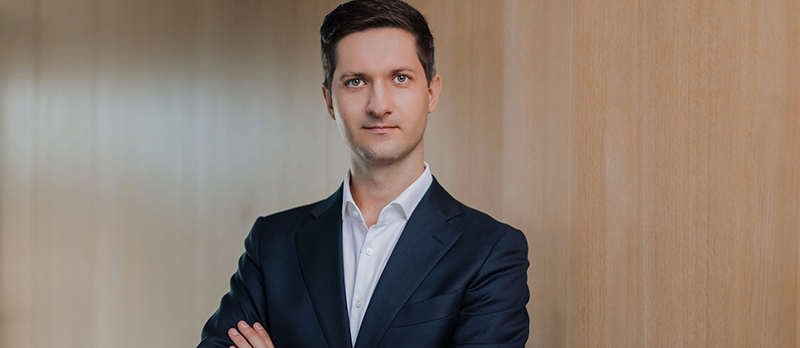
To be able to defend a contrarian thesis requires confidence in the investment process. And in the opinion of Oleg Schantorenko, client portfolio manager at DJE Kapital, represented in Iberia by Altment Capital Partners, that confidence can only come from a disciplined portfolio construction process. At the boutique founded by the renowned German asset manager Dr. Jens Ehrhardt, discipline is set by its FMM method: fundamental, monetary and market technical.
Translated into English as fundamental, monetary policy and market technical factors, it is the proprietary research philosophy that the firm has been applying to its funds for the past 50 years. Born out of Dr. Jens Ehrhardt’s doctoral thesis, it incorporates long-term (business cycle, commodity indicators, sovereign debt metrics), medium-term (yield curve, inflation) and short-term (sentiment indicators, capital flows to funds, volatility) elements.
NO FEAR OF BEING CONTRARIAN
“By not focusing on only one part of the technical elements of the market, we can have a much more complete picture,” explains Schantorenko. Take 2022, for example. That year, he says, the sell side was focused on inflation levels, which remained elevated, so the general sentiment was pessimistic. However, their analysis of fundamentals showed that companies were actually becoming more resilient to price increases, that there was even margin improvement in some industries.
It is also what allowed them to spot the opportunity in certain technology companies when their share price was at lows. “Investor sentiment was very negative, but our FMM model showed us that the technology sector was being more disciplined, cutting costs and watching margins,” he explains.
In fixed income, an example of this contrarian philosophy can be seen in their duration management. Although looking back now it is easy to see that it was the right decision, it was key to the fund’s resilience that year that they were positioned with very low duration. “But it wasn’t the consensus that year because it wasn’t thought that rates were going to rise so much or so sharply,” Schantorenko recalls.
Now one of his positions furthest from the consensus, although the narrative is changing, is his belief that the European Central Bank is probably going to have to cut rates before the Federal Reserve does. “It would be an unprecedented move, but given the divergence in growth in the two regions we see it as the natural decision,” he explains. That’s why they are not hedging their US dollar position in the portfolio.
FOUR CONSISTENT RISK-RETURN FUNDS
And having this analysis systematised is what makes the investment process replicable. That is, consistent. Consistency of management is one of the most difficult qualities to achieve in asset management. Designing a management process that truly passes the cotton wool test at different stages of a market cycle. And DJE Kapital can boast of having as many as four funds in its range that stand out with the FundsPeople Rating for having achieved good risk-adjusted returns over the long term.
This has also been key to the fund manager achieving one of its hallmarks: being more resilient in times of large market declines. And almost more importantly, it has done so in all the major drawdowns of recent times: 2022, 2020, 2019, 2015, 2012…
And in Schantorenko’s opinion, another reason for its consistency is the stability of the management team. Jan Ehrhardt, son of the firm’s founder, has been leading the team for more than 20 years. Ehrhardt is joined by Moritz Rehmann, who has been with the firm since 2005.
SIMILARITIES AND DIFFERENCES BETWEEN TWO CONSISTENT FUNDS
In Spain the German boutique has made its mark with its flagship Zins & Dividende, but on his latest visit to Madrid Schantorenko wanted to highlight to clients its more flexible sibling, the DJE – Multi Asset & Trends. Both funds share the same philosophy and market view. The main difference is the risk budget. While the DJE – Zins & Dividende will have a maximum of 50% of the portfolio in equities, the DJE – Multi Asset & Trends moves in a more aggressive range, from 50% to 100%. The latter can also incorporate gold via ETFs and ETCs to express a more cautious stance.
Article published in FundsPeople